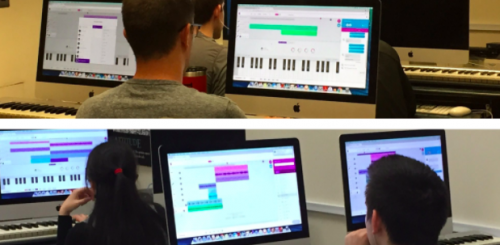
STEM vs. STEAM: Balancing the Pros and Cons
February 7, 2023In an increasingly tech-driven world, the importance of STEM education cannot be overstated. From grocery shopping to ordering food at a local restaurant, you may have noticed how significant a role automation, smart devices, and even AI play in everyday life. So, why is there a debate about STEM vs. STEAM?
As our interconnected world becomes increasingly tech-savvy, following generations will need to maintain and evolve this technology. It’s one of the main reasons parents are pushing toward an increased emphasis on STEM education and building their children’s analytical and technical skills.
However, the problem with the push towards STEM education is that the increased focus on analytical reasoning might leave students lacking in other areas of schooling primarily influenced by art and humanities. These areas include creative thinking, the development of humor, and even emotional regulation.
Today, we’ll demonstrate how STEM and STEAM can work together to maximize analytical reasoning and creative thinking while minimizing drawbacks. Let’s get started!
STEM vs. STEAM: What’s the Difference?
Before we jump in, let’s clear up any confusion about STEM and STEAM curriculum. These two acronyms may appear the same, but one letter makes all the difference.
What is STEM?
As the tech industry expands, you’ve probably heard the term “STEM” a few times. This commonly used acronym stands for science, technology, engineering, and mathematics. The STEM-focused curriculum aims to prepare students for a career in STEM-related industries. These four disciplines emphasize problem-solving, critical thinking, and innovation.
What is STEAM?
Akin to STEM, the STEAM acronym refers to science, technology, engineering, arts, and mathematics. STEAM education integrates the arts, writing, and history with STEM-related subjects. Besides the addition of the arts, STEAM education emphasizes developing soft skills such as emotional intelligence and collaboration.
STEM vs. STEAM: The Pros and Cons
If you bring up the STEM vs. STEAM debate to a group, you’re bound to receive many different reactions. At first, STEM and STEAM seem about the same, so what’s the big deal?
The Benefits of STEAM Education
The most apparent advantage of STEAM education is that combining the arts and humanities with hard sciences is that the next generation of tech innovators will develop an understanding of aesthetics and tone.
In addition, the implementation of the arts can allow students to solve problems creatively and analytically. Students can learn more about stories, emotions, ideas, and even humor by integrating arts. Also, art encompasses many critical aspects of emotional development for adolescents.
Of course, students need to be well-rounded if they’re going to thrive as adults. STEAM education allows students to balance technical knowledge with other disciplines. It’s also important to note that putting all one’s eggs in the analytical basket leaves students without critical reasoning skills that require creative input.
The Downsides of STEAM Education
Naysayers argue that the push toward STEM education in the U.S. would not exist if it weren’t for the overabundance of liberal arts graduates. They also state that the dismally low number of STEM graduates is a significant issue, and it’s simply not helpful to add arts education to the mix.
Moreover, many STEM educators believe that STEM is inherently creative and artistic, so requiring formal art education would only take time to become aware of more crucial areas of study. Since STEM education already requires students to consider creative solutions, there’s no need to incorporate arts education.
Bring the Best of STEAM Education to Your Classroom
There may be a few perceived “drawbacks” to STEAM education, but there are plenty of ways to integrate art into STEM without losing the benefits of STEM.
If you’re ready to reap the benefits of STEAM education, try taking an integrative approach to these subjects. These easy tips will help you create more balance between the arts and sciences. Best of all, it’s made easy with Soundtrap for Education!
1. Remember, There’s No ‘I’ in STEAM!
STEAM education encourages students to work together and find new, creative ways to solve problems. When students tackle complex projects as a team, they can develop the valuable communication and social skills they need to thrive in adulthood.
There are plenty of exciting ways for you to bring a mix of STEAM and project-based learning to your classroom! For instance, students could work in groups to create an Audio Field Guide about birds on your campus.
STEAM projects of this nature allow students to learn about different organisms and environments while performing scientific inquiry. Then, they’ll round the project out by recording their findings in Soundtrap for an artistic flair that takes their learning outcomes to the next level.
2. Connect Your Lesson Plans to the Real World
Sometimes, you might notice your students’ attention dwindling when you’re explaining abstract concepts, but who can blame them? It can be challenging to foster student engagement when your class doesn’t understand how these lesson plans relate to their everyday lives.
When planning a STEAM-related lesson, don’t forget to incorporate real-world connections to help students understand why their knowledge is applicable outside the classroom. As an educator in the modern world, you’ll need to prepare students for life in the Information Age by creating opportunities for students to collaborate, create, and connect.
For example, try adding technology to your lesson plans instead of banning it! Today’s edtech tools make it easy for students to collaborate and share ideas from any mobile device, whether on their smartphone or a laptop.
You can even take your STEAM lesson plans a step further by allowing students to collaborate on projects related to the real world by creating newscasts about current events or relating fractions to music.
3. Get Curious and Ask Questions
Instead of teaching to the test, spark authentic student engagement by showing your class how to find information and ask the right questions. Your STEAM curriculum should inspire students to think critically about any information they’re presented. This way they can easily distinguish between credible and untrustworthy data.
Don’t be afraid to ask yourself a few questions when you’re designing a STEAM project! Consider these questions before starting your next lesson:
- What two or more subjects will you integrate into your lesson plan?
- How will students engage in authentic problem-solving?
- How will students contribute to learning outcomes with their choices?
- What will students create to demonstrate their mastery of learning outcomes?
Students will rise to the challenge of your STEAM lesson plans as you incorporate inquiry-based instruction practices. Put power in your student’s hands and let them figure it out on their own! Offer gentle guidance as your students make decisions and create their own solutions.
4. Encourage Students to Connect with Their Emotions
This education style can bring your curriculum to life! STEAM education is about more than course content – it’s about empowering the next generation of scientists, artists, entrepreneurs, and mathematicians.
However, future leaders will need soft skills to reach their full potential. Most educators know that arts education improves social-emotional learning, such as empathy, creativity, and emotional regulation.
You can add a touch of emotion to your STEAM lesson plans by encouraging students to dive deep and exercise greater empathy. If you’re unsure where to start, check out our Emoji Lesson, in which students increase their emotional vocabulary and create a musical composition about their emotions.
Another fun social science lesson is our Me in a Minute Podcast, where students create their own podcasts and describe themselves. This lesson can help your students form better connections with their peers while building their confidence.
5. Let Students Share with the Entire Class!
Once your students collect data, ask questions, and create their STEAM masterpieces, it’s time for them to share their creations with the entire class! Presentation skills are some of the most critical soft skills for students to develop. It’s one thing to understand STEAM-related concepts, but sharing these ideas with clarity is entirely different.
As students present their STEAM projects in the safe haven of your classroom, they’ll learn how to speak confidently and create an engaging presentation. Plus, it’s lots of fun for students to see each group’s project! You can also let students share their STEAM projects on the school website or social media for the whole world to see.
Experience the Best of Both Worlds with Soundtrap for Education
You don’t need to choose between STEM or STEAM with the right edtech tools! Soundtrap for Education is the ultimate audio production platform for students and teachers to create and edit audio recordings. Pupils and educators can easily tap into their artistic side with this intuitive audio platform that facilitates a creative learning environment for every subject, regardless of the student’s age or experience level.
With Soundtrap for Education, students and teachers can collaborate with advanced cloud technology at any time or place. In addition, the platform comes equipped with a robust resource portal. This portal contains tutorials, an external curriculum, and lesson plans to complete the educational experience. To ensure privacy, teachers can enable invite-only groups in Soundtrap’s versatile digital environment.
If you’re ready to enhance your educational experience with an intuitive cloud-based audio production platform, get started today with Soundtrap for Education! And be sure to share this article with other teachers in your network.
 EDU Portal
EDU Portal


